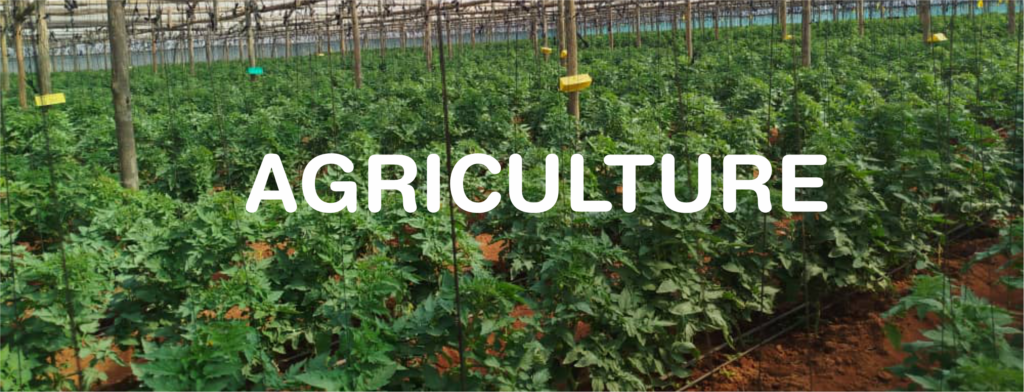Botswana’s pursuit of food sufficiency is gaining momentum through the Temo Letlotlo Programme, a bold initiative aimed at revitalizing arable agriculture and reducing dependency on food imports. As the country charts this path, valuable lessons emerge from Zimbabwe’s agricultural rebound, where smallholder farmers have played a transformative role. This article integrates insights from Zimbabwe, Africa-wide smallholder data, and Botswana’s geographic and policy realities to outline a strategic roadmap for sustainable food security.
1. Zimbabwe’s Agricultural Rebound: A Smallholder Success Story
1.1 Smallholders as the Backbone of Recovery
In Zimbabwe, smallholder farmers cultivate most of the agricultural land and produce the bulk of staple crops. Despite economic volatility and climate shocks, their resilience has stabilized food production.
- Over 70% of Zimbabwe’s population relies on agriculture.
- The Smallholder Agriculture Cluster Project (SACP) targets 78,000 households, promoting productivity through value chain clusters and climate-smart practices.
- The Smallholder Irrigation Revitalization Programme (SIRP) aims to revitalize 6,100 hectares in 152 existing smallholder irrigations schemes in the semi-arid zones of four provinces of Zimbabwe: Manicaland, Masvingo, Matabeleland South and Midlands. Over 27,700 poor rural households are expected to benefit.
1.2 Cluster-Based Production and Market Integration
Zimbabwe’s SACP promotes Agricultural Producer Groups (APGs) and clusters to:
- Pool resources and share infrastructure
- Engage in contract farming and aggregation
- Improve access to inputs, credit, and markets
1.3 Climate-Smart Agriculture and Irrigation
Key interventions include:
- Conservation agriculture and drought-resistant crops
- Irrigation schemes in rainfed areas (Diversifying the crops and improving precision agriculture practices also enhance the adaptive capacity of the agricultural sector, making it more resilient to changing climatic conditions.)
- Water harvesting and soil management
2. The Impact of Smallholder Farmers Across Africa
Drawing from the OCP Agriculture in Africa Report (2021):
2.1 Contribution to Output and Employment
- 85% of Africa’s agricultural output is produced by small-scale commercial farmers.
- Agriculture employs 60% of Africa’s population, with smallholders forming the backbone of rural employment.
2.2 Digital Inclusion and Services
- Over 33 million smallholders used digital agriculture services by 2019.
- In Nigeria, OCP’s Farmer House initiative reached 500,000 rural farmers.
2.3 Climate Resilience
- The Adaptation for Smallholder Agriculture Programme (ASAP) supported 8 million smallholders across 43 countries.
- Smallholders are highly vulnerable to climate shocks, with only 6% of arable land irrigated continent-wide.
2.4 Gender and Youth Inclusion
- Women make up 43% of the agricultural labour force.
- Equal access to finance for women could increase output by up to 4% and reduce undernourishment by 12–17%.
- Youth (aged 16–25) are underrepresented despite being 60% of Africa’s population.
3. Botswana’s Agricultural Landscape: Challenges and Opportunities
3.1 Irrigation and Water Resources
- Only 0.3 million hectares of land are cultivated in Botswana.
- Irrigated agriculture accounts for less than 5% of total cultivated land.
- Botswana has limited water bodies, with most agriculture relying on rain-fed systems and groundwater.
- Despite this, 45% of surface area is suitable for grazing, and there is potential to scale up irrigation through solar-powered water pumps and water harvesting.
3.2 Agricultural Productivity and Import Dependency
- In 2019, Botswana produced 850,000 metric tons of agricultural goods but demanded 1.74 million metric tons.
- Import dependency stood at 51.2% in 2019 and is projected to rise to 57.9% by 2043.
- The Agriculture Scenario suggests that with improved irrigation and yields, import dependency could drop to 44%.
4. Climate-Proofing and Skills Development
4.1 Climate-Proofing Agriculture
Botswana’s agriculture is highly vulnerable to droughts and rainfall variability. Climate-proofing strategies must include:
- Climate-smart agriculture (minimum tillage, drought-resistant crops)
- Water harvesting and irrigation infrastructure
- Renewable energy integration, especially solar-powered irrigation
4.2 Skills Development and Education
- Botswana invests 11.7% of GDP in education, the highest globally.
- Mean years of education are projected to reach 11.3 years by 2043.
- However, learning outcomes remain poor, requiring:
- Vocational training in agri-tech and climate-smart farming
- Extension services and farmer field schools
- Digital literacy for accessing mobile-based agricultural platforms
5. Temo Letlotlo Programme: Strategic Alignment
Temo Letlotlo is Botswana’s flagship arable agriculture programme, designed to empower farmers and boost national food production.
5.1 Empowering Smallholders
- 100% input subsidies for micro-scale farmers
- Seasonal loans and supervised credit for commercial smallholders
- Performance-based rewards (Mmoko Reward Package)
5.2 Promoting Clusters and Cooperatives
- Group and cluster models for collective bargaining
- Strategic Grain Reserve contributions to build national stocks
5.3 Climate-Smart and Inclusive
- Agro-ecological mapping for crop suitability
- Inclusion of youth, women, and persons with disabilities
6. Recommendations for Botswana
To maximize smallholder impact, Botswana should:
- Scale up irrigation using solar and groundwater systems
- Invest in rural infrastructure and storage
- Strengthen cooperatives and market linkages
- Expand climate insurance and early warning systems
- Promote digital platforms for input access and extension services
- Enhance vocational training in agriculture and agri-tech
Conclusion
Botswana’s path to food sufficiency hinges on unlocking the potential of smallholder farmers. Zimbabwe’s rebound and Africa-wide data show that smallholders, when empowered with the right tools, can drive national food security and economic resilience. With strategic investments in irrigation, climate-proofing, and skills development, Botswana can transform its agricultural sector and achieve sustainable food sovereignty.


